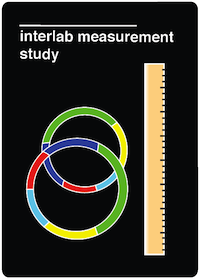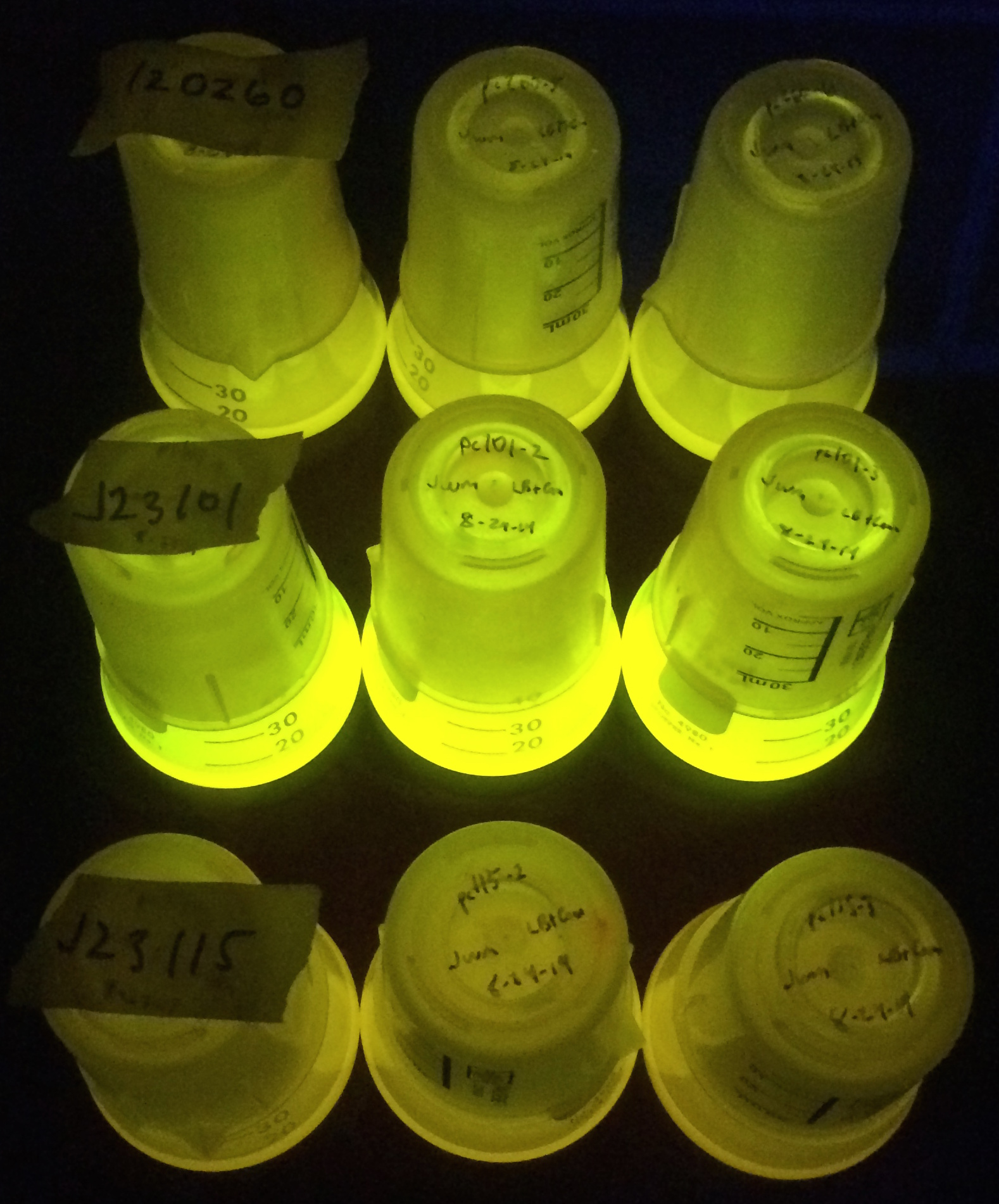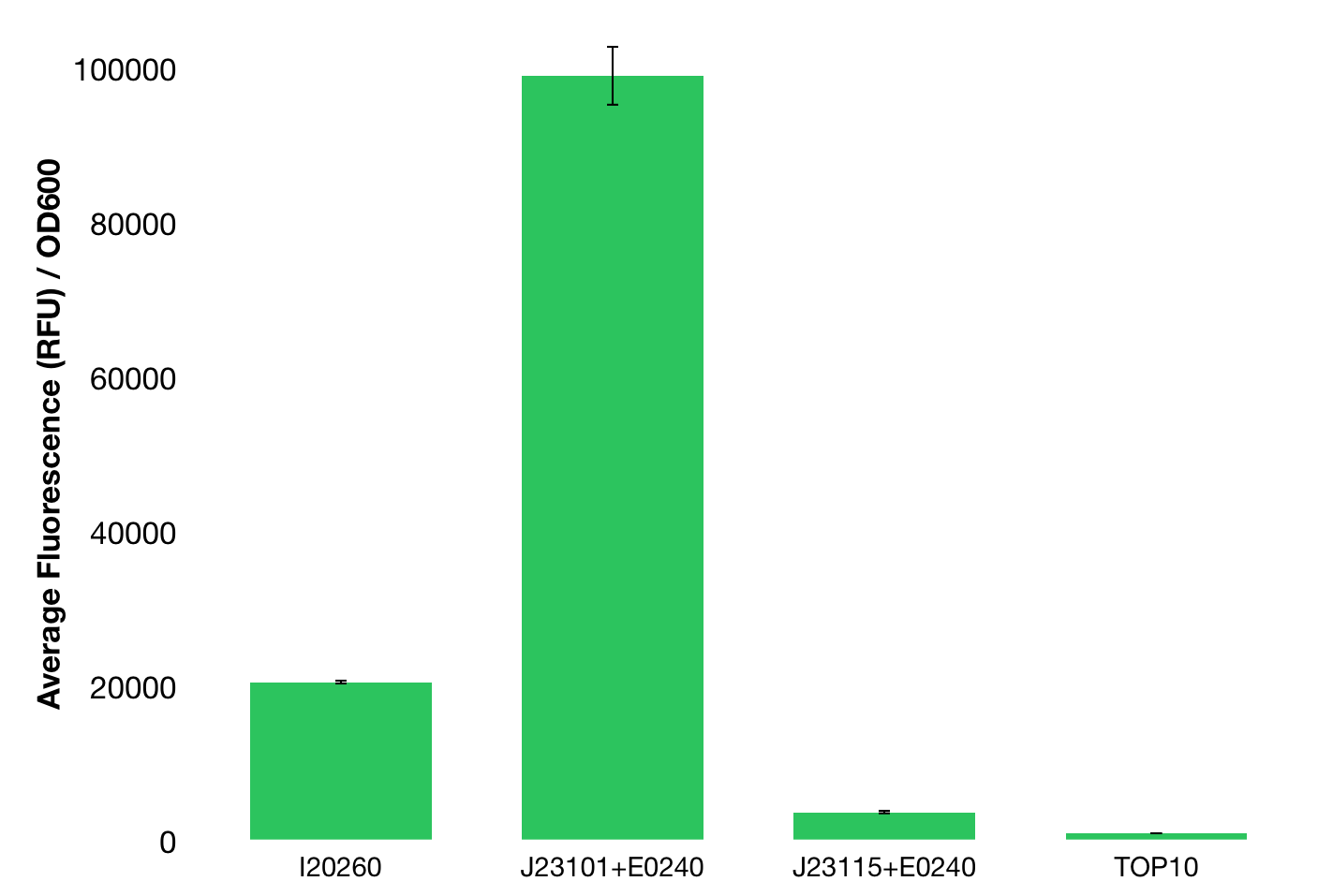Team:Austin Texas/interlab study
From 2014.igem.org
Jordanmonk (Talk | contribs) |
Jordanmonk (Talk | contribs) m |
||
| (24 intermediate revisions not shown) | |||
| Line 80: | Line 80: | ||
<h1>Interlab Study</h1> | <h1>Interlab Study</h1> | ||
| - | + | <div align="justify"> | |
| - | The interlab study is a new feature of iGEM this year. As part of the measurement track, we participated in the interlab study as described on the [https://2014.igem.org/Tracks/Measurement/Interlab_study Interlab Study page]. The purpose of this study was to measure the fluorescence of three different devices, two of which we constructed in lab from | + | The interlab study is a new feature of iGEM this year. As part of the measurement track, we participated in the interlab study as described on the [https://2014.igem.org/Tracks/Measurement/Interlab_study Interlab Study page]. The purpose of this study was to measure the fluorescence of three different devices, two of which we constructed in lab from BioBrick parts. The third device was simply a plasmid included in the 2014 parts kit. Below, we detail our Interlab Study experience and discuss what our findings could mean. |
<h1>Devices Measured</h1> | <h1>Devices Measured</h1> | ||
| - | [[File:interlabliquidcultures.jpg|240px|right|thumb| '''Figure 1.''' Triplicate liquid cultures of each construct]] | + | [[File:interlabliquidcultures.jpg|240px|right|thumb| '''Figure 1.''' Triplicate liquid cultures of each construct.]] |
| + | |||
| - | '''1.''' The first device is [http://parts.igem.org/Part:BBa_I20260 BBa_I20260], which is a composite | + | '''1.''' The first device is [http://parts.igem.org/Part:BBa_I20260 BBa_I20260], which is a composite BioBrick part that contains: |
*A promoter, [http://parts.igem.org/Part:BBa_J23101 BBa_J23101], a downstream gene ([http://parts.igem.org/Part:BBa_E0240 BBa_E0240]), and a backbone ([http://parts.igem.org/Part:pSB1C3 pSB1C3]). | *A promoter, [http://parts.igem.org/Part:BBa_J23101 BBa_J23101], a downstream gene ([http://parts.igem.org/Part:BBa_E0240 BBa_E0240]), and a backbone ([http://parts.igem.org/Part:pSB1C3 pSB1C3]). | ||
| - | *The downstream gene is also a composite of a number of | + | *The downstream gene is also a composite of a number of BioBrick parts including an RBS - [http://parts.igem.org/Part:BBa_B0032 B0032], a GFP coding sequence - [http://parts.igem.org/Part:BBa_E0040 E0040], and a transcriptional terminator - [http://parts.igem.org/Part:BBa_B0015 B0015]. |
| Line 105: | Line 106: | ||
*This device is in [http://parts.igem.org/Part:pSB1C3 pSB1C3], the same backbone as the first device. | *This device is in [http://parts.igem.org/Part:pSB1C3 pSB1C3], the same backbone as the first device. | ||
| + | |||
| + | |||
| + | |||
<h1>Protocols</h1> | <h1>Protocols</h1> | ||
| Line 112: | Line 116: | ||
*The next morning, add 10µL of each overnight culture to 10 mL of LB with three replicates of each (15 total flasks) and grow 16-18 hours at 37°C, shaking at 300rpm. Triplicate cultures were continued. | *The next morning, add 10µL of each overnight culture to 10 mL of LB with three replicates of each (15 total flasks) and grow 16-18 hours at 37°C, shaking at 300rpm. Triplicate cultures were continued. | ||
*After 16-18 hours, add 80 µL of each culture to the wells of a clear-bottomed black 96-well plate. | *After 16-18 hours, add 80 µL of each culture to the wells of a clear-bottomed black 96-well plate. | ||
| - | |||
| - | |||
<h3>Measurement Protocol</h3> | <h3>Measurement Protocol</h3> | ||
| Line 119: | Line 121: | ||
*The 96-well plate was inserted into an Infinite 200 PRO Microplate Reader | *The 96-well plate was inserted into an Infinite 200 PRO Microplate Reader | ||
*Then, using the Tecan i-control the proper settings were selected and recorded. | *Then, using the Tecan i-control the proper settings were selected and recorded. | ||
| - | **The Settings were: Excitation at 480 (9 nm width) and Emission at 525 (20 nm width) with optimal gain. | + | **The Settings were: Excitation at 480 nm (9 nm width) and Emission at 525 nm (20 nm width) with optimal gain. |
| - | *Finally, the plate reader measured the fluorescence and the absorbance ( | + | *Finally, the plate reader measured the fluorescence and the absorbance (OD<sub>600</sub>) for each well. |
<h1>Sequencing Data</h1> | <h1>Sequencing Data</h1> | ||
| - | http://parts.igem.org/ | + | After sequencing our constructs, we aligned them to the reference part sequences. '''While constructs 1 and 2 were consistent with the references, we were surprised to see two point mutations in construct 3.''' This seemed highly unlikely to have occurred by chance. As such, we consulted the parts registry and found that the [http://parts.igem.org/cgi/sequencing/one_blast.cgi?id=21282 sequence analysis of the spring 2014 plate] shows two point mutations consistent with our sequence reads. |
| - | + | *[https://2014.igem.org/Team:Austin_Texas/interlab_study/sequences/I20260 Sequence of construct BBa_I20260]<br> | |
| - | + | *[https://2014.igem.org/Team:Austin_Texas/interlab_study/sequences/J23101+E0240 Sequence of construct BBa_J23101+BBa_E0240]<br> | |
| - | + | *[https://2014.igem.org/Team:Austin_Texas/interlab_study/sequences/J23115+E0240 Sequence of construct BBa_J23115+BBa_E0240]<br> | |
| - | [https://2014.igem.org/Team:Austin_Texas/interlab_study/sequences/I20260 Sequence of construct BBa_I20260]<br> | + | |
| - | [https://2014.igem.org/Team:Austin_Texas/interlab_study/sequences/J23101+E0240 Sequence of construct BBa_J23101+BBa_E0240]<br> | + | |
| - | [https://2014.igem.org/Team:Austin_Texas/interlab_study/sequences/J23115+E0240 Sequence of construct BBa_J23115+BBa_E0240]<br> | + | |
[https://static.igem.org/mediawiki/2014/9/9a/2014_UT_Austin_iGEM_Interlab_Study_Sequencing_Data.zip Compilation of all three sequences in .ab1 format with quality metadata ] | [https://static.igem.org/mediawiki/2014/9/9a/2014_UT_Austin_iGEM_Interlab_Study_Sequencing_Data.zip Compilation of all three sequences in .ab1 format with quality metadata ] | ||
| Line 139: | Line 138: | ||
[[File:interlabchartminimal.png|440px|right|thumb| '''Figure 2.''' Relative fluorescence data for the three parts measured.]] | [[File:interlabchartminimal.png|440px|right|thumb| '''Figure 2.''' Relative fluorescence data for the three parts measured.]] | ||
| - | Data was collected using Infinite 200 PRO Microplate Reader and a 96 well black plate with 80 µl of culture per well. As shown in Figure 2, we used triplicate cultures and took averages of each set to represent the measured relative fluorescence of the part. Our representation of the data subtracts the fluorescence of the media background from the GFP signal, and then is divided by the OD<sub>600</sub> of the cell culture with the OD<sub>600</sub> of the media subtracted, or (GFP | + | Data was collected using an Infinite 200 PRO Microplate Reader and a 96-well black plate with 80 µl of culture per well. As shown in '''Figure 2''', we used triplicate cultures and took averages of each set to represent the measured relative fluorescence of the part. Our representation of the data subtracts the fluorescence of the media background from the GFP signal, and then is divided by the OD<sub>600</sub> of the cell culture with the OD<sub>600</sub> of the media subtracted, or (GFP−LB<sub>bkgd</sub>)/(OD<sub>600</sub>−OD<sub>600</sub>LB<sub>bkgd</sub>). |
| + | |||
| + | Despite the genetic similarities in the devices—all three contained the same coding sequence, two devices had the same backbone, and two devices had the same promoter sequence—there were stark differences in the amount of fluorescence produced by each of the devices. | ||
| - | + | <h2>Discussion of Unexpected Results</h2> | |
| + | While we expected the device with a strong promoter and the highest copy number plasmid to have the highest fluorescence, we did not observe this to be the case. Instead, we saw that the two constructs with the same promoter and coding region in both the medium copy number plasmid pSB3K3 and the high copy number plasmid pSB1C3 actually yielded the strongest fluorescence signal in the medium copy number plasmid. It is possible that the high copy number plasmid pSB1C3 had a negative effect on overall fluorescence—perhaps it became toxic or slowed cell growth. However, it is also possible that we may have swapped cultures or mislabeled an initial eppendorf or culture tube. | ||
| - | + | If this is not the case, then we would consider the possibility that the medium copy plasmid pSB3K3, while lower copy number than pSB1C3, may be a better expression platform for this protein. One can also compare the relative qualitative fluorescence of the cultures visually ('''Figure 1''') by looking at the top two rows of flasks: the top row being BBa_I20260 in pSB1C3 and the middle row being the same construct (BBa_J23101+E0240) in pSB3K3. | |
| - | In comparing | + | In comparing constructs #1 and #3 (with the same coding sequence and plasmid backbone but different promoters), it should be noted that the sequence of promoter J23115 (device #3) differed by two bases from the reference sequence in the registry. While the sequence we used is consistent with the Spring 2014 Kit Distribution sequence analysis performed by the BioBricks Foundation, it is likely that this mutated promoter may have a different activity than the reference sequence. We observed that J23101 (device #1) shows a several-fold stronger signal than our mutated promoter J23115. While the [http://parts.igem.org/Promoters/Catalog/Anderson measured relative fluorescence data] of the reference sequences generally agree with our data, the mutated J23115 shows slightly less activity compared to the reference data. The relative qualitative fluorescence of the cultures can be compared visually ('''Figure 1''') by looking at the top and bottom rows: the top row using promoter J23101 and the bottom row using mutated promoter J23115, both in pSB1C3. |
| + | </div> | ||
<!-- WIKI CONTENT ENDS --> | <!-- WIKI CONTENT ENDS --> | ||
<html> | <html> | ||
Latest revision as of 03:34, 18 October 2014
| |||||||||||||||||||||||||||||
 "
"



